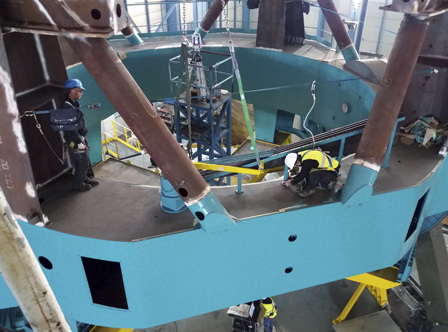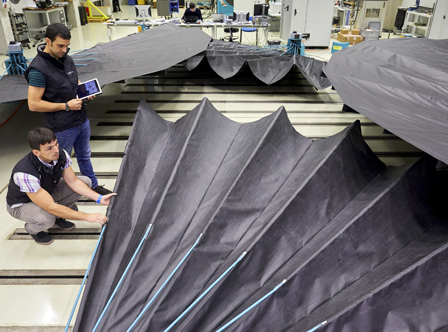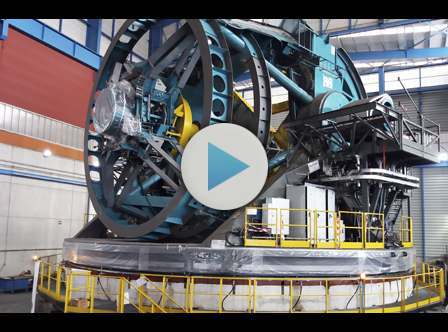NEWS
Scientific equipment represents a major technological challenge as, among other things, it sometimes must operate under extreme vacuum and temperature conditions. Designing and manufacturing equipment of this kind requires a significant amount of technological expertise and a high degree of specialisation in, among other disciplines, precision engineering. In recent years, the technology centre's experience in terms of ultra precision has allowed the organisation to be come a benchmark provider for large international scientific facilities such as the LSST.
Construction work for the Large Synoptic Survey Telescope (LSST), to be commissioned in 2020, is still underway at Cerro Pachón, in the Chilean desert of Atacama.
With an approximate cost of 700 million dollars and backed by a public-private partnership, nearly one hundred astronomers, physicians and engineers are working to create facilities that will produce great technological leap as regards discovering how stars actually work.
Together with the engineering firm GHESA-Empresarios Agrupados, responsible for developing the telescope's main structure, IK4-TEKNIKER is designing and developing a number of systems for control, safety, camera cable rotation and protective mirror covers for this major cutting-edge scientific installation.
In this regard, researchers from the technology centre have been collaborating for some time with the Ghesa and Asturfeito teams in Avilés (Asturias, Spain) in work connected to erection, adjustments, commissioning and validation tests.
Although all of these developments have been carried out at IK4-TEKNIKER, the time has now come to run tests on the machine to check that everything will be operating smoothly.
The next step will take place in Chile. IK4-TEKNIKER researchers will be travelling to the Atacama desert for several months to participate in training sessions and share their knowledge with local operators with regard to how these specific telescope components must be operated and maintained.
The LSST will be fitted with a mirror measuring 8.4 m in diameter (i.e., the same width as a tennis court) and have sufficient capacity to examine the entire visible sky. In order to do so, the telescope will be capable to scan the sky every 3 or 4 nights and deliver an image that is 40 times larger than a full moon thanks to a 3,200 megapixel digital camera. The telescope, to be installed at an altitude of 2,700 metres, will perform real-time image analysis and detect significant variations ranging from explosions involving supernovas in other parts of the universe to asteroids that could collide with the Earth.
See pictures here.






